11th Hour Plea To Stop Demo Of ‘Abolitionist Place’ House
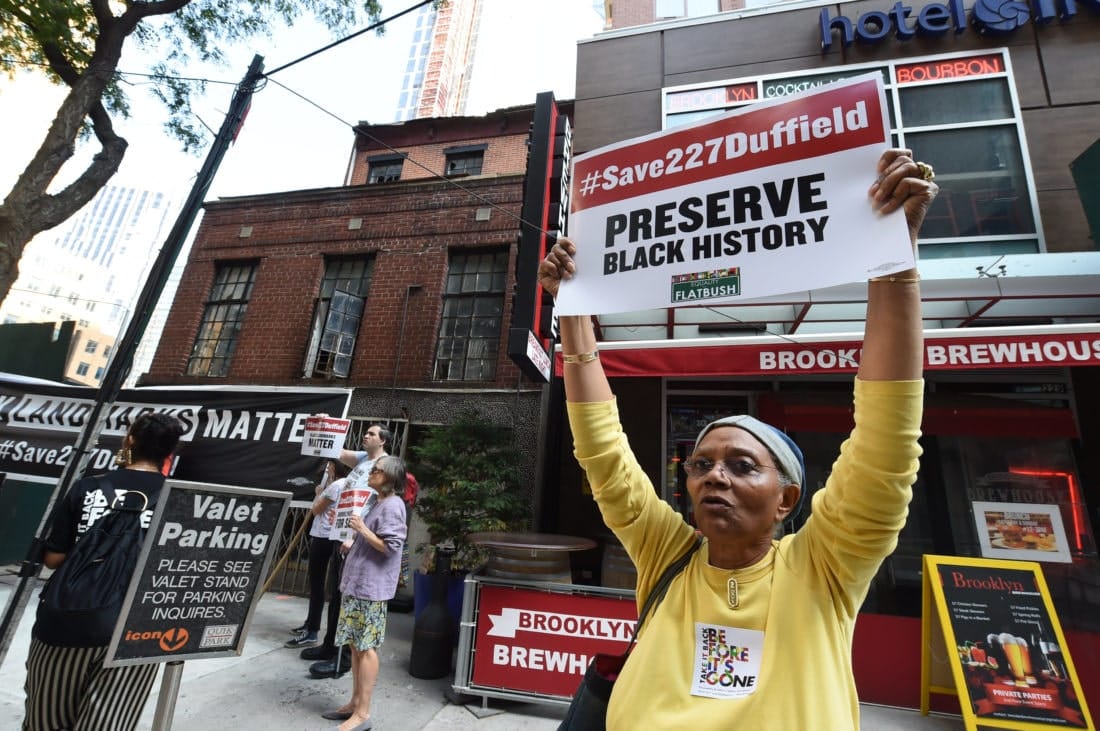
DOWNTOWN BROOKLYN – It’s a three-story brick building, its windows broken, roof sagging, and façade weather-beaten. But a bold group of 15 protesters stood outside the more than 150-year-old house surrounded by newly-constructed skyscrapers on Saturday in a last ditch effort to stop the demolition of 227 Duffield Street on what is commonly referred to as Abolitionist Place.
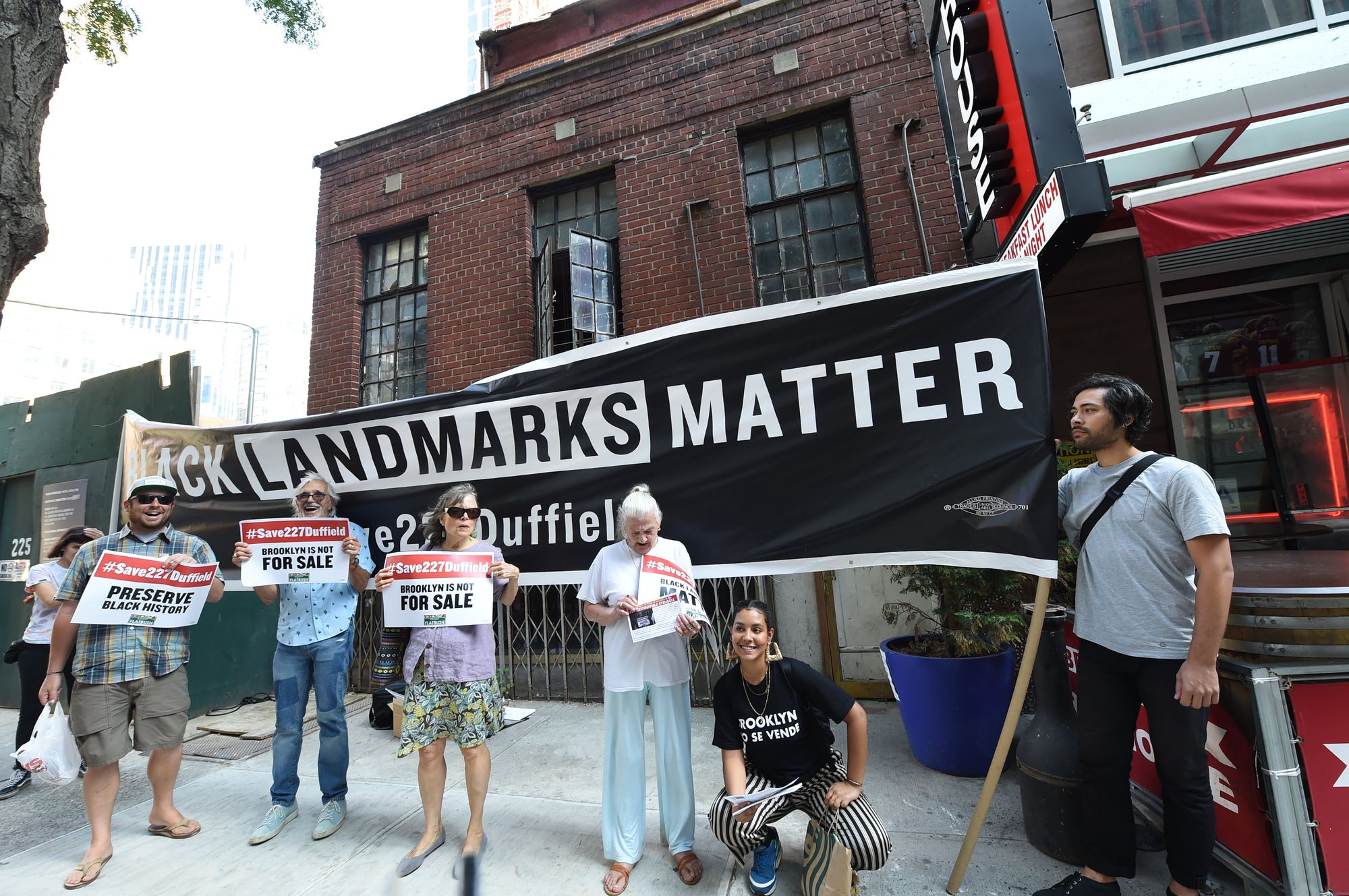
A demolition permit was filed in June for the house where family members of “Mama Joy” Chatel lived prior to the building being sold to a developer. Members of the Equality for Flatbush Anti-Gentrification Network discovered the filed permits for the building at 227 Duffield Street. An eviction notice was served by City Marshals shortly before that, evicting the occupants listed as Matthew Lee, Jane Doe and John Doe, organizers said.
The house is the last survivor of the row houses on that block that have since been sold to developers and are now slated for demolition. The 227 Duffield Street house is said to be where well-known abolitionists, Thomas and Harriet Truesdell, lived and where black people found freedom through the Underground Railroad. There reportedly were tunnels under this and other homes on the block created to ferry runaway slaves as it was a crime in the 1850’s to harbor them.
The house went through a variety of owners over the years, the family having turned over part ownership years ago after being unable to pay taxes or debt. Eventually, the former owner died, leaving several family members still living there. They were evicted this past spring. Inside, old furniture is still present on the second floor, windows are smashed, and the ceilings are caving in. The ground floor commercial space is being used by construction crews for storage.
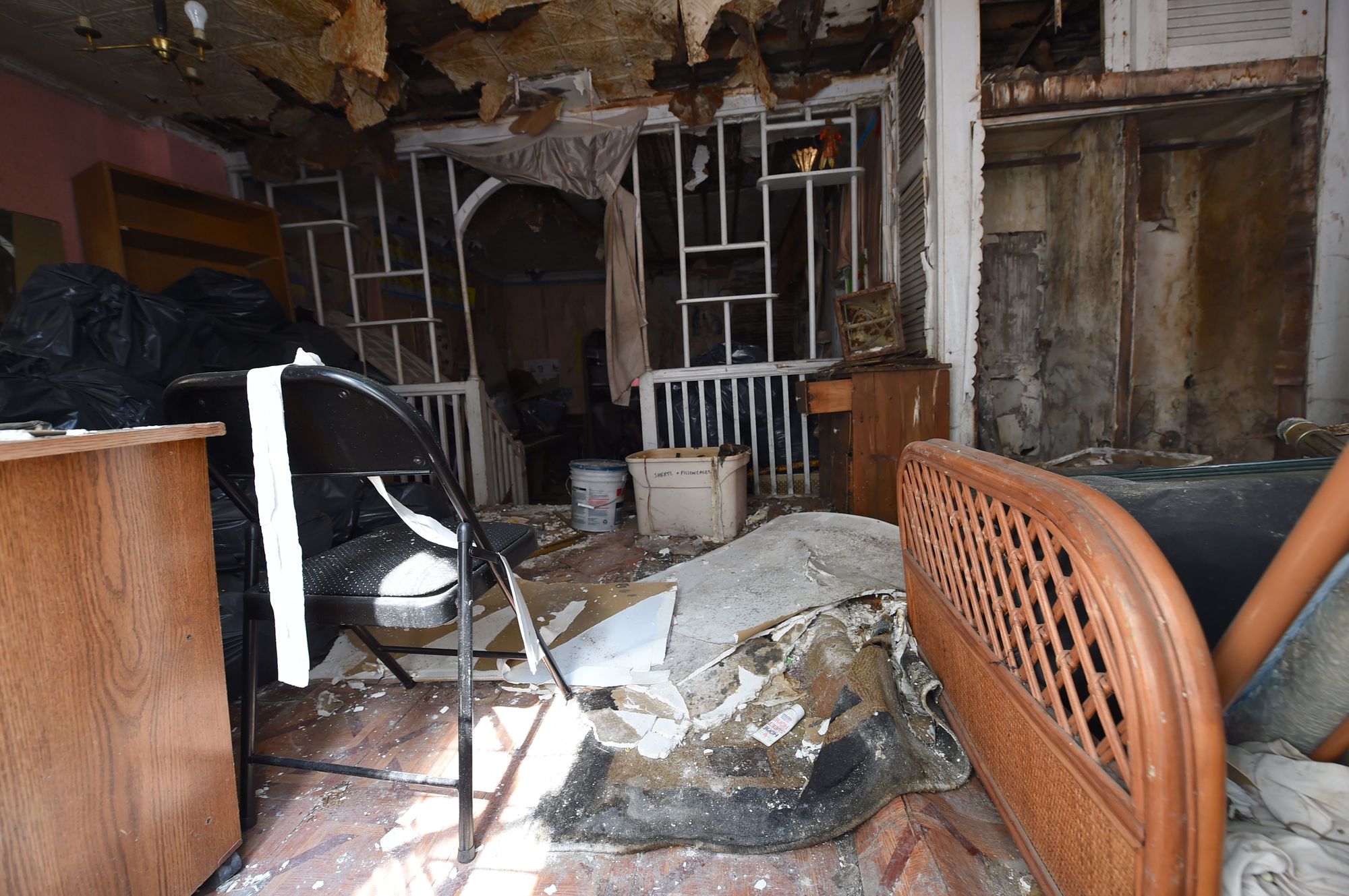
Protestors know this is the 11th hour for this structure and are seeking a stay by the Landmarks Preservation Commission to stop its demolition for the sake of history. They stood outside on Saturday with signs and chanted, “Abolitionist home, leave it alone.”
“We are here working six years and we have saved five black businesses, and that shows we can win,” said Imani Henry, a leader with the Brooklyn Anti-Gentrification Network. “We had over 200 people here to protest and we now have 4,000 names on petitions. We are getting calls from as far away as London, professors, archeologists, people who want justice. The real estate people can have their money and lobbyists—they own the police and the mayor—the people around the country are the real force.”
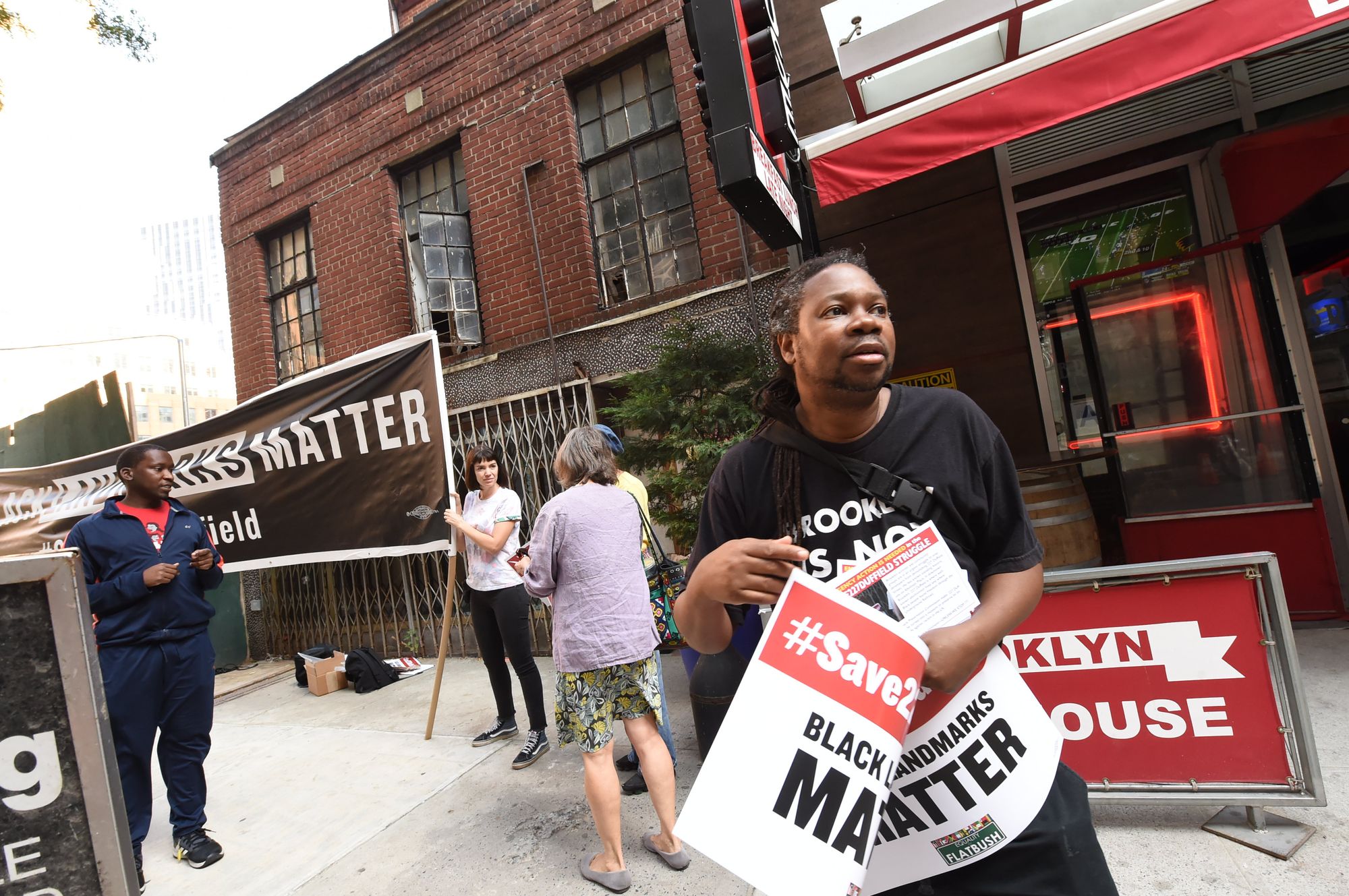
While they have had larger crowds at previous rallies, Henry said Saturday’s smaller gathering is not an indication of surrender.
“This is a long, protracted struggle that many people have been involved in since 2007,” Henry said. “The initial struggle started by the people who lived in this building, one who has passed, ‘Mama Joy’ Chatel…. They fought eminent domain, and then the Abolitionist Place movement started. Mama passed a few years ago and then one of the family members was removed by marshals. Then we got word in July that the developer who owns the property wants to tear it down. But everything is possible to appeal to landmarks—there have been lots of meetings and it is under review. This is an emergency because if this is demolished, we will never have this piece of history again, the history of colonialism and freedom that they (the developers) want to take away.”
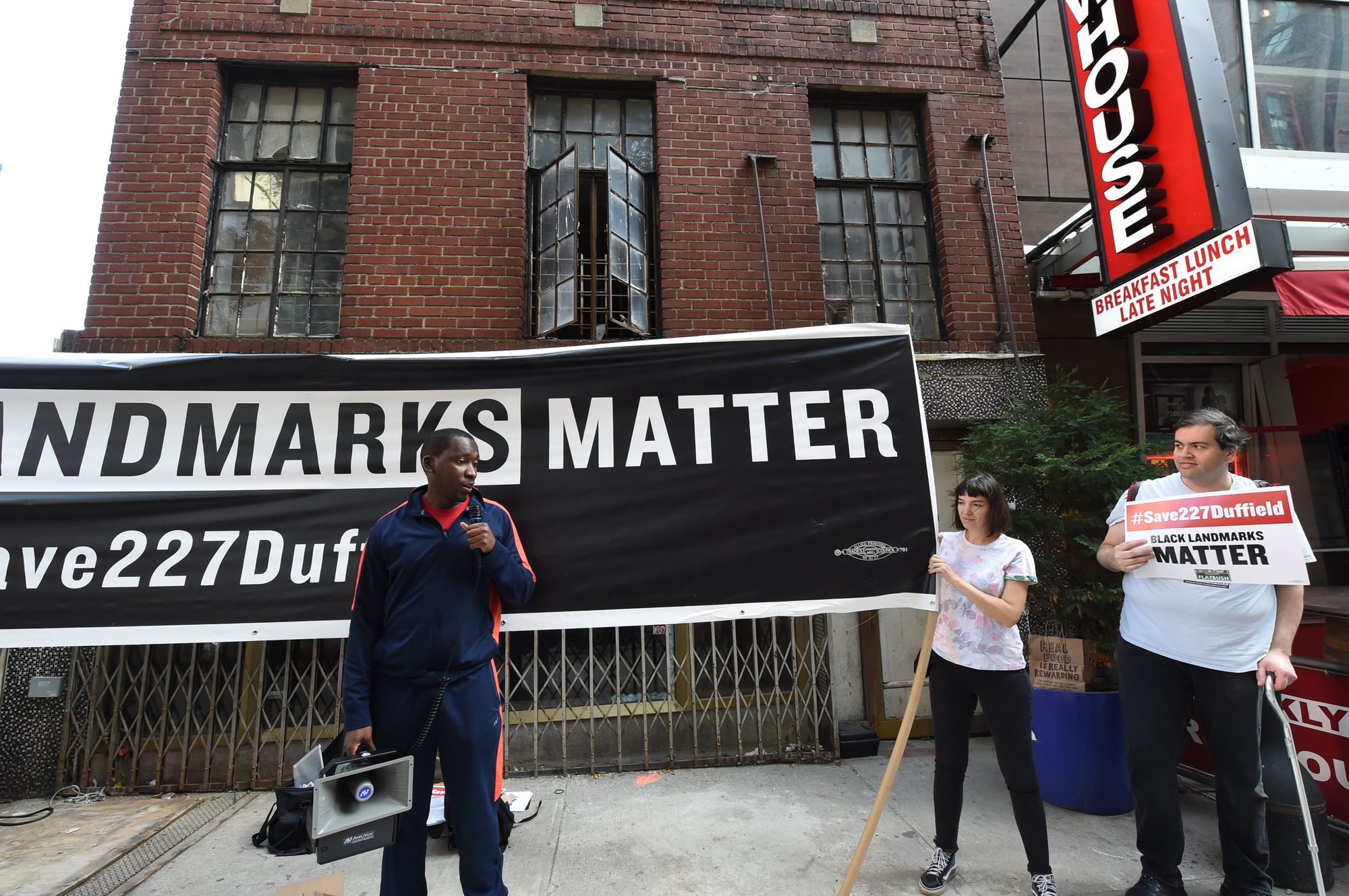
Activist and historian Raul Rothblatt said the building represents the “rich, beautiful network of those who fought slavery and lynching in New York City.”
“Brooklyn was the center of the southern slave system—most people supported slavery in New York and Brooklyn though a few people fought against it,” Rothblatt said. “People who lived here were incredibly brave. We know all the homes on the street were connected and there were tunnels connecting them and now there is only one building left. It was the home of important abolitionists and so it would be a better city if we save this one building and keep it as a monument to the people who stood up.”
The protestors came from all different walks of life and neighborhoods. Gary Falzone of Flatbush Avenue was accompanied by Dillon Brooks and they held signs calling for preservation of the building.
“I’m a history buff and so I believe we must preserve what we can of history,” Falzone said. “Look at this building and look at the windows, every window tells a story. We lose a piece of history if it is torn down. People don’t appreciate history and the importance of this building.”
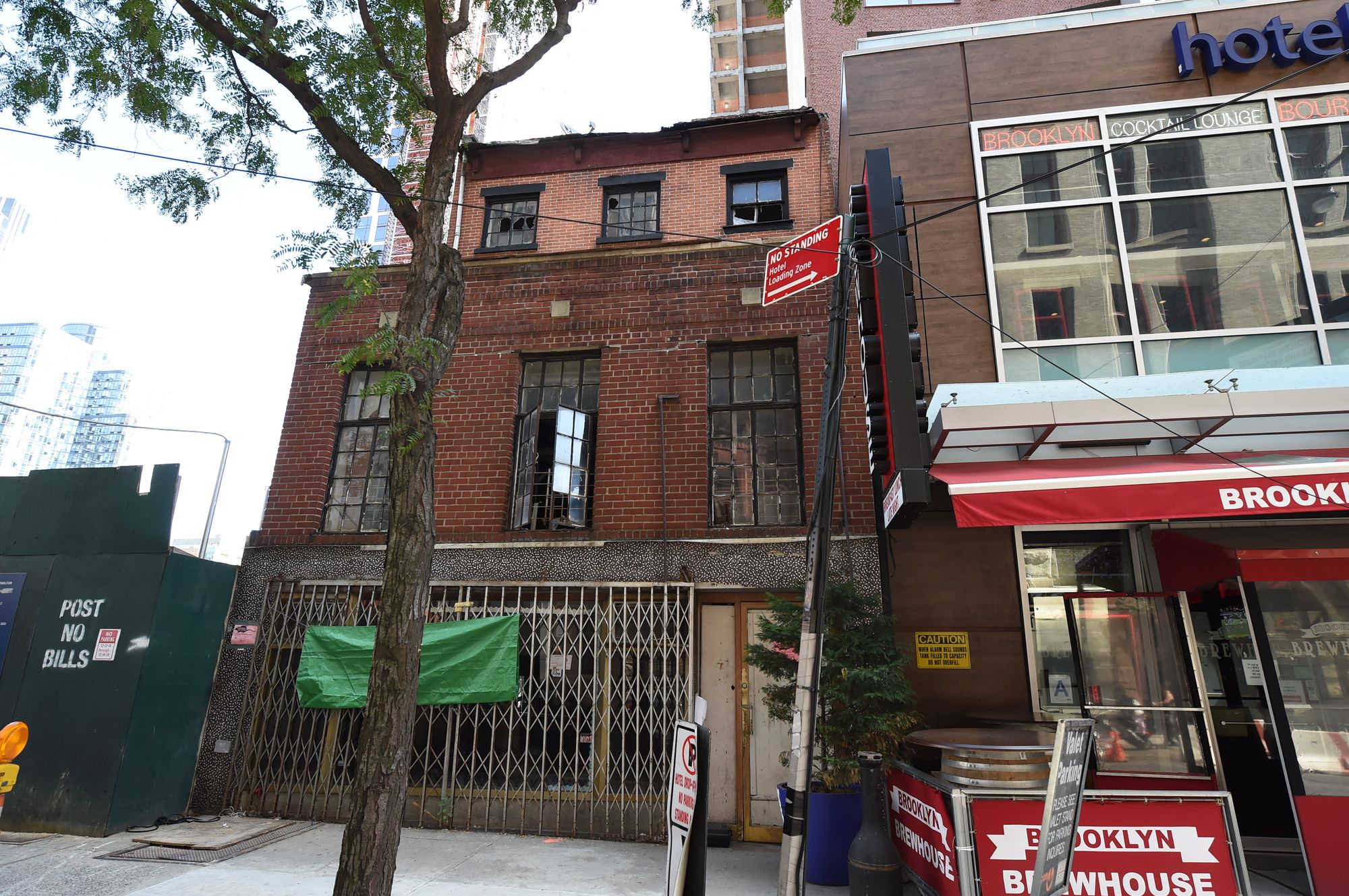
Linda Gnat-Mullin of Park Slope said she believes the effort to save the building is worth it.
“I can tell you that, Issac hopper, a Quaker at one point during a disturbance in Manhattan, took children over a roof to save them. A developer came into Chelsea, put a new floor, but then the developer had to remove the floor because Landmarks stopped him. We have had some success, and people should know that the abolitionist movement was so important in Brooklyn, especially after after the Fugitive Slave Act of 1850. People had to choose what was legal and what is moral.”
But do they feel like Don Quixote on an impossible mission?
“It does feels like Don Quixote had it easy compared to what we are dealing with here,” said Rothblatt. “We thought we saved the building. It was scheduled to be demolished under Mayor Bloomberg. We thought we had won, but we didn’t realize someone else would come along and try to destroy it again. There is more than 100-years of history representing a time when millions lost their lives to the slave trade. Our struggle for 15 years seems pretty easy compared to what they went through fighting lynching and slavery.”
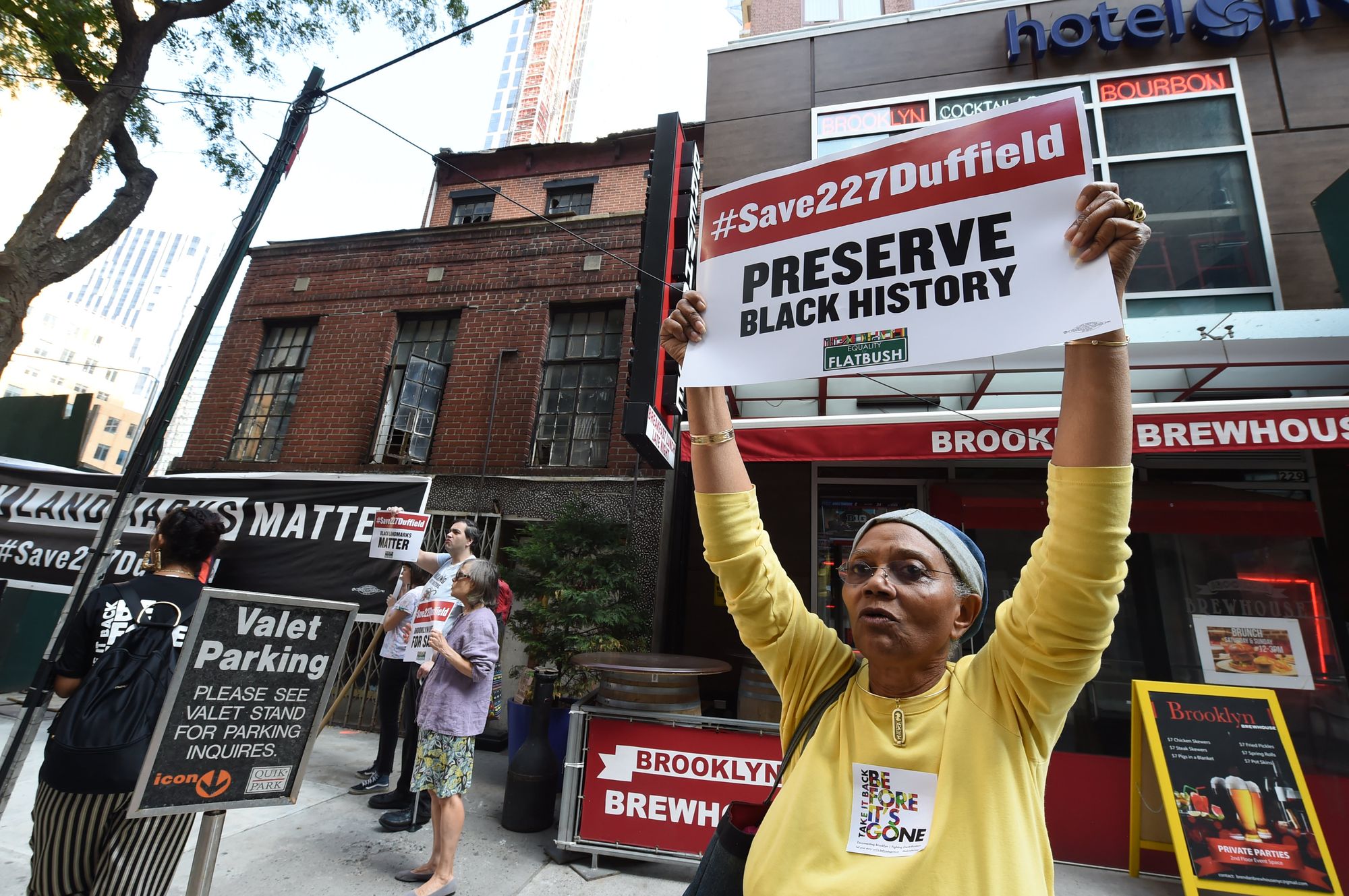
While the building has a brick façade now, a research report on potential underground railroad associations by AKRF of Park Avenue South, indicates that archival documents suggest the property may have been constructed circa 1848-1850. A wood extension in the front was replaced with a brick extension sometime in the 20th century. The house was owned by Thomas and Harriet Truesdell, prominent abolitionists of 19th century, the report said, and indicated that 227 and other buildings on the block were part of the underground railroad, a group of “safe houses” used to shelter runaway African-American slaves. That report is available at http://s-media.nyc.gov/agencies/lpc/arch_reports/1019.pdf.
It was not known by press time what the Landmarks Preservation Commission has determined on the property.




